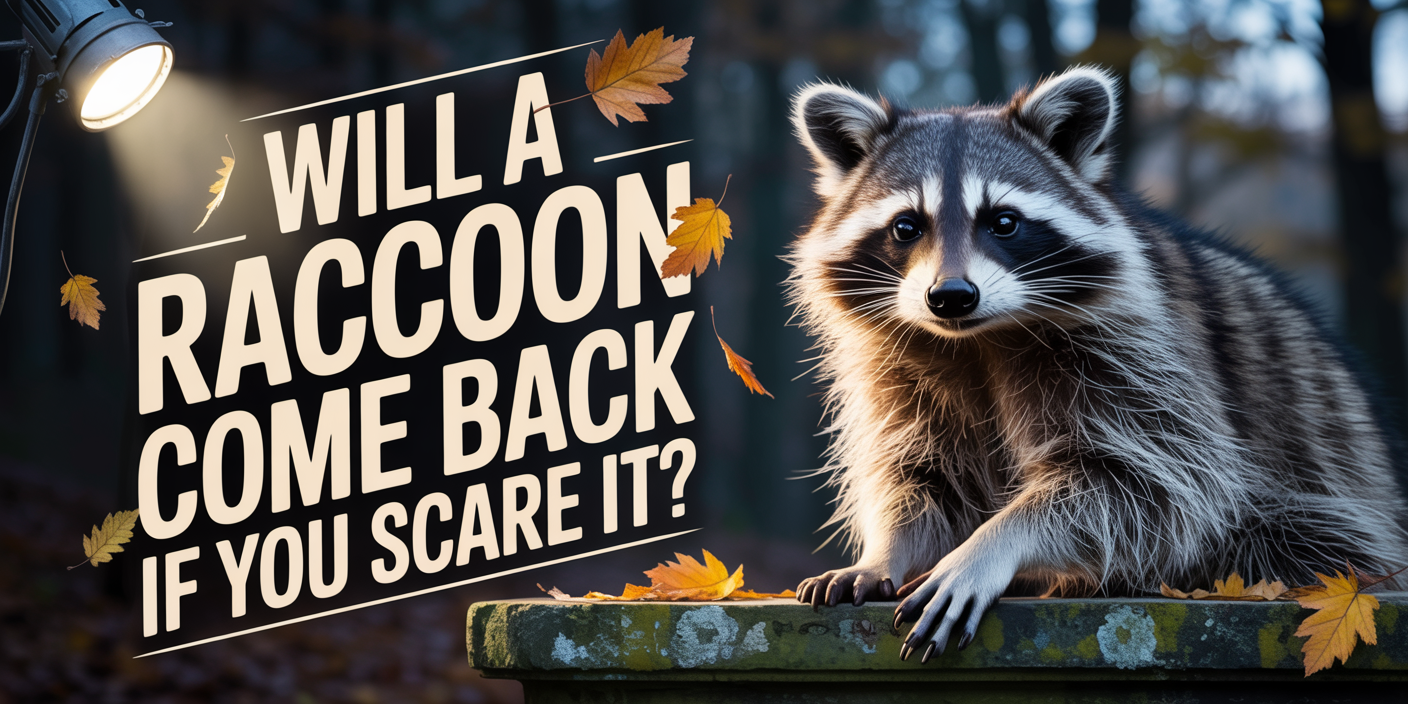A raccoon will often sneak back after a scare because its hunt for easy food and cozy shelter overrides a momentary fright. Only by cutting off its resources and sealing entry points do you stop repeat visits.
Scaring a raccoon might make it vanish from sight, but chances are it will sneak back unless you tackle its real motivations. These masked bandits stake out territory based on food and shelter, not fear. When easy meals or cozy den sites remain, a nighttime return is practically guaranteed.
Understanding raccoon instincts reveals why simple scare tactics act like a bandage on a broken bone. By identifying entry points, food sources, and hiding spots you can cut off its reasons for returning. In this guide we dive into proven deterrents and show how AAAC Wildlife Removal stops repeat visits for good.
Why Scaring Alone Isn’t Enough
Raccoons size up risk against reward, and a one-off fright rarely tips the balance. They return for reliable resources, not because they’re fearless.
- Territorial Mapping: Raccoons create mental maps of your yard and neighborhood. A fleeting scare won’t erase their established routes.
- Food Motivations: Predictable meals from garbage cans or pet bowls outweigh occasional startle responses. Hunger drives them back faster than fear drives them away.
- Comfortable Shelter: Attics, crawl spaces or dense foliage offer safe, cozy dens. Even if startled, they’ll return when shelter remains unchanged.
Signs a Raccoon Will Likely Return
Fresh Paw Prints or Droppings
Raccoons leave clear tracks in soft soil and fresh droppings near their favorite hangs. Spotting new prints or scat by your bins means they’ve scoped out your yard as a regular stop. That level of comfort predicts a repeat visit.
Rustling or Vocalizations at Dusk
Chittering calls or rustling leaves at twilight aren’t just spooky; they’re a sign of confidence. When raccoons feel safe enough to explore openly, they’ll keep coming back under cover of darkness. Those sounds mean they know your space.
Rummaged Trash or Spill Patterns
Tipped-over cans and scattered pet food aren’t random messes, they’re invitations. Consistent trash raids show they’ve mapped your routes and feeding schedule. Easy access to grub beats a single scare every time.
Gnawed or Shifted Entry Materials
Chewed roof vents, wiggled boards or loosened panels signal nesting plans in progress. Damage around attics or crawl spaces proves they still eye your home as prime real estate. Sealing those weak spots is your first defense against their return.
Factors That Keep Raccoons Coming Back
Scaring a raccoon only treats the symptom, not the root cause. Until you remove what’s drawing them in, they’ll view your property as a reliable resource.
- Unsealed Entry Points: Gaps around soffits, loose roof vents or crawl-space openings act like welcome mats. Every unpatched hole invites repeat scouting missions.
- Consistent Food Sources: Overflowing garbage bins, pet dishes left outside or bird feeders dripping seeds turn your yard into an all-you-can-eat buffet. Raccoons map out predictable meals faster than you can scare them off.
- Accessible Water: Leaky faucets, ponds or pet water bowls provide essential hydration on hot nights. Easy access to water makes your property a go-to rest stop.
- Cozy Denning Spots: Dense shrubs, hollow trees or cluttered storage areas offer snug hideaways. When they find a safe, sheltered nook, they’ll keep coming back regardless of how often they get spooked.
Proven Long-Term Deterrents
Scaring raccoons only buys you a brief reprieve. Lasting results hinge on cutting off every incentive and creating a persistent discomfort they can’t ignore. These strategies remove attractions and teach raccoons to steer clear for good.
Habitat Modification
Secure your property by redesigning tempting environments. Fit trash cans with raccoon-proof locks, trim overhanging branches and seal gaps around foundations or vents. Removing easy access to food and shelter makes your yard a dead zone for nightly invaders.
Beyond bins and branches, rethink landscaping near your home. Replace dense groundcover with gravel or thorny shrubs to eliminate cozy hiding spots. A clear, well-lit perimeter sends a strong “no trespassing” signal.
Scent-Based Repellents
Use natural odors that trigger raccoon avoidance instincts. Predator urine granules or ammonia-soaked rags placed at entry points create ongoing unease. Reapply after rain and rotate scent stations to prevent habituation.
Combine repellents with physical barriers for extra impact. Place granules under decks and ammonia near attic vents while patching gaps. This two-pronged approach ensures raccoons associate both smell and structure with an inhospitable environment.
Motion-Activated Devices
Startle intruders unpredictably with lights or sprinklers that trigger on movement. Raccoons quickly learn to link your yard with sudden stimuli and steer clear. Rotate device locations weekly to keep them guessing.
For maximum effect, pair lights with sound, an unexpected noise boom can reinforce avoidance. Adjust sensitivity so only larger animals trigger the response. Consistent surprises condition raccoons to bypass your property altogether.
Scheduled Maintenance
Inspect and repair potential den sites on a regular schedule. Patch loose siding, reinforce deck undersides and replace torn screens promptly. Consistent upkeep communicates a firm “off-limits” message.
Keep a simple checklist and walk your property monthly. Note weakened areas, clear fallen branches and test motion devices. A proactive routine denies raccoons the safe harbors that draw them back night after night.
Locking Down Your Space
Scaring a raccoon might feel satisfying in the moment, but lasting results require a full strategy that cuts off food, water and shelter incentives. By combining habitat changes, scent-based repellents, motion-triggered devices and routine maintenance you turn your property into a no-go zone.
Ready to stop repeat visits for good? AAAC Wildlife Removal offers humane exclusion and proven prevention plans tailored to your home’s weak points. Schedule a free inspection today and reclaim your yard with confidence.
When to Call AAAC Wildlife Removal
If raccoon troubles go beyond a few DIY fixes, like multiple entry points or signs of nesting. bring in our experts for professional exclusion that seals every gap and removes critters humanely. AAAC Wildlife Removal combines targeted inspections with proven barriers and ongoing support to make your home off-limits for good. Schedule your free assessment today! and enjoy lasting peace of mind.




